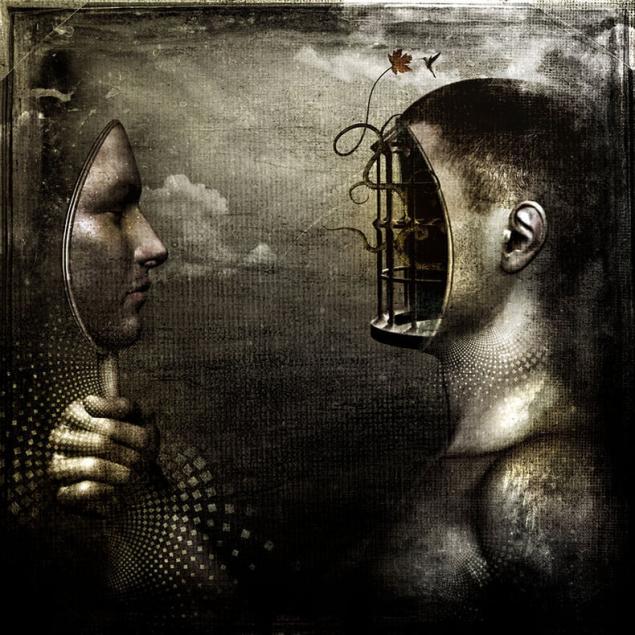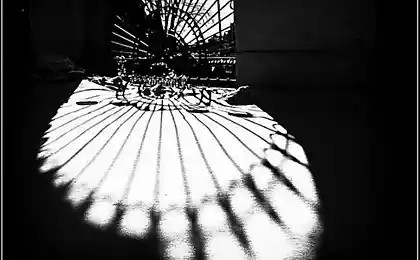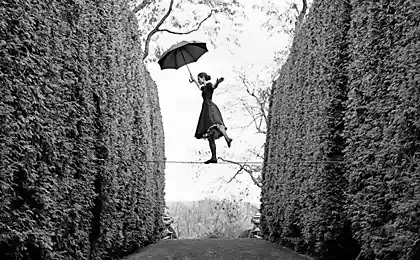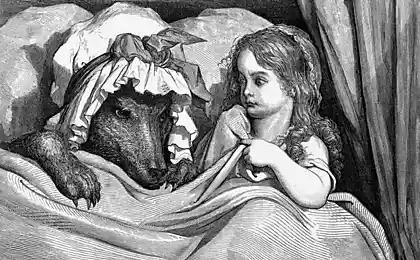756
Scott Kiloby: We are fighting our own shadows and cling to them
The shadow is the aspect of our separated "I", for some reason displaced and projected outward at the "other". "Other" actually – not that other, as a reflection of the separate self.
We are fighting our own shadows and cling to them. The battle with the shadow is the suppression of their negative traits, accompanied by a strong aversion to those who have it.
Grasping for the shadow is the suppression of their positive traits and subsequent strong attraction to those who possess it. We delve into the details of what shade, how to identify and how to work with it. But first, let's deal with the most common questions that arise at this stage.
If the shadow is just a manifestation of ourselves, why bother talking about them? And to go into the details? Why not just continue to know the presence of awareness, and to see all the manifestations are inseparable from awareness? I hope you will see the answer to this question in this article.

The good news is that the "shadow", which was first used as a term by Carl Jung, is one of the greatest discoveries of Western psychology. Recognition of the shadow opens up a new level of freedom, which can be assessed only after it.
The shadow is what we don't like to talk about themselves. However, it is still there in us, even if we do not see. But it is seen by others. But do something we don't notice this in yourself. It is our blind spots. We push these unmatched features and find them in the "other". That is why the shadow often called "expelled me". I think that the problem in someone else, but actually it is "my" problem, it is repressed and projected outward part of me.
It is important to emphasize that while we are out a part of yourself "outside" and see it as other people's traits and emotions, no observation will not help. It seems to us that these characteristics belong to others, while they, the hidden part of the separate self. It's part of who we despise, who are ashamed of who we are out for different reasons. You can scream that there is no "I", millions of years, but still miss the blind spots. We take these shadows with you to "enlightenment".
John Welwood leads a good definition of the shadow in his book "the Way to a Psychology of Awakening":
Focused mind selectively emphasizes some aspects of experience while ignoring others, thereby leaving out those neglected aspects. The shadow is a mirror reflection of what is focused attention. Preference to any part instead of the whole leads to the opposite trend, that is part of the desire to trim.
Here are some examples of opposites that can become a shadow. There are also many others. Any opposed can become a shadow.
Sneaky – cute
Control – not controlling
Greedy – generous
Funny – sad
Successful – loser
Let's stick to the term Weleda "focal attention". Separated "I" is a set of dual convictions, for example, "I'm good", "I'm a victim", "In my life something is missing", "I am a successful TV presenter" or "I'm unhappy". It's just a game of opposites.
We focusareas on certain traits, beliefs, identities, feelings, while denying or ignoring others. For example, to support a conviction of myself as a "good man", you suppress the traits, thoughts, behavior "despicable" itself. You have to ignore them, to rationalize, to deny, suppress and ignore them.
For example, to be spiritual, people replacing traits, feelings, and beliefs that do not meet the criterion of "spirituality". Those who are proud of the lack in himself of the desire to control, we have to stubbornly ignore the controlling voice inside. Those who see themselves as generous, often suppress the devil of greed.
Focusing on one pair of opposites, creating this certain image of yourself, we repress, deny and displace other side of yourself, which is never lost, but goes into the shadows. Suppression is simply self-deception. Opposites are interdependent, two sides of the same coin.
They do not exist without each other. You can't separate them, except to pretend, but it's just self-deception. It is possible to suppress or deny one of the parties, but to separate it from each other. The shadow side always occurs together with "acceptable". Suddenly you, "good people," for example, you begin to notice all the villains in the world: rude Manager at the store, her husband, who seems so insensitive; the chief of which a kind word will not tell anyone.
But we are not our beliefs. Our true identity is not limited to only one of the opposites does not hang either in "grace", any "meanness". While it may be nice to assert their identity in a kind of dual belief or trait, but our true nature – awareness. Recognition of awareness is not about comfort. It is about the fact to see what really is at the moment. Awareness is the space of experiencing in which all opposites are inseparably emerge and dissolve.
Check it out for yourself right now. No matter what you tell yourself, is still evident in the space of awareness. If you say, "I'm controlling", there is yet an awareness of this belief, which sees the history of the object from their perspective. The opposite story, "I'm not controlling" also arises from this perspective. These stories are equal, as a manifestation in space of mindfulness.
We are in conflict with the imaginary "other", choosing one belief instead of another and clinging to a selected side as for their identity. From this point of view the objects are not seen equivalent. Choose side receives much more attention. According to Welwood, "the shadow is a mirror reflection of what is focused attention...a preference for any part instead of the whole leads to the opposite tendencies". The "other" with whom you are in conflict– it's just your shadow that follows you everywhere, in any relationship.
The 3-2-1 shadow Work
Scott Kiloby has permission to use the developed integrated Institute process "the 3-2-1 shadow Work". This amazingly powerful technique. It consists of three parts:
Detection shadow
The most important thing at this stage is primarily to detect the shadow. A huge mistake in the process of finding the shadow is the immersion in mental analysis its history in an attempt to detect the shadow. In addition, there is a tendency to just sit and endlessly ponder about different people and circumstances in my life, trying to see in his last fight with shadow. This is not necessary.
No need to fixate on stories from his life. This is nothing more than self-absorbed. Mere presence in the present will allow you to see what your internal conflict. Just be careful here and now. Don't analyze past conflicts with others.
The shadow shows the present conflict. Who would you not see at the moment with a feeling or trait that really bothers you – this is shadow. Another man is a clue to your shade.
Many mistakes, calling the manifestation of the shadow of any judgments about others. Not every judgment is a shadow. For example, if your neighbor talks a lot, the thought "my neighbor talks too much" – not necessarily your shadow. Maybe your neighbor really just says a lot.
The shadow can be recognized by the extent to which it bothers you. Leads are those people or events "outside" that cause you have a strong mental and emotional responses. If you feel irritation or even anger when your neighbor is talking, it's probably the work of the shadows. That means that to detect the shadow.

After the discovery of his own shadow many of those who are engaged in practices of mindfulness, making a big mistake. They just consciously observing negative thoughts and emotions about the neighbor. But this observation can often only strengthen the belief in the existence of the "other".
So it turns out something like "I see your thoughts and feelings about your damn neighbor who talks too much". It only increases the division between "I" and "others". Starting to think the problem is the neighbor. And observation can reinforce this distorted perception.
No conscious observation of what is happening will not show the true state of Affairs in terms of shadows. In the space of awareness, the shadow always seems to be a manifestation of the "other" and what it really is – repressed aspect of your self. Don't need to watch. Keep up with shadow dialog, and admit it.
Dialogue with the shadow
The next step is to enter a dialogue with another person or a character trait. First to enter into dialogue with the "other" may seem funny or even odd. But find out what you are actually so concerned in this line or in this man. No need to converse with a real person. Talk to him. Say it out loud. For example:
John is very irritating to controlling people. He notices that the arguing in my mind with those who control others. He'd really like that each of them would shut up and leave everyone alone. In the process 3-2-1 John found a moment when there is a shadow. One day he noticed that he had a strong mental and emotional reaction to his controlling boss.
John just watched your thoughts and emotions. He went out and, being one-on-one with him, pretended to be the boss sitting in the room with him, and said to him: "I absolutely do not like. You're arrogant, domineering and controlling! You always think you know everything better than others, and I already got it!"
Without dialogue with the shadow of this rejection and further would arise in John against his boss or other people. Shadow is constantly repeated in our lives. This is due to reflexes, cyclical and endlessly repetitive. In the dialogue with the shadow John saw that so annoys him in the head. He recognized this trait – control. He called her and saw the reasons for his aversion to her. John stopped to ignore, suppress or deny what really feels. And for the first time this cycle was interrupted.
Recognition Of The Shadow
When you entered into dialogue with the shadow, you can admit it. What does it mean? It means to stop pretending that there are "I" and there are "other". This means to look at your life history, what's happening in your thoughts, and to see what's so annoying you in the other trait is present in your personal history.
It means to usurp hell, admitting: "I'm controlling", "I'm hungry", "I have something that I react so violently". It means to list, as in you manifest the same trait that you so annoying in others. How it feel – to admit what you denied. See where you behave as a controlling or greedy. The recognition will put an end to self-deception. This topic ceases to root only on one of the boundaries – outside from an imaginary "other".
When the shadow is recognized and seen as part of awareness – your true nature – and sees you, and the other merely as thoughts. You no longer build their identity on the dual line and not fight with her opposite. Then I, and others, and dual traits to support the separation, are seen as equal manifestations of awareness. While you are fighting with shadows, phenomena are not perceived equal. The separation seems real.
In the above example, John recognizes his shadow, watching your thoughts and seeing that the idea that controlling people is impossible, is in itself controlling. If John looks a little longer, he might see that he has all kinds of thoughts about what others must change. And it's control. He thinks he knows what is best for others. Sounds a lot like the line with which John fought in your head, isn't it? This is not an accident. John fought with his shadow.
We recognize repressed and projected outward line to hang in its opposites. We recognize it because it is ALREADY ours. This is already a facet of our ego which has been suppressed, because it seemed too horrible or too beautiful. Recognizing it, we are not starting to believe in some kind of a new story. Instead, we begin to see all history, all opposites as equivalent manifestations coming and going to what we really are – awareness.
When we have the belief of separation, of duality struggling with themselves. Opposites react to each other. This is all based on the identity crisis: we don't know who or what they are. For example, the good people fight bad. Stupid – smart. Spiritual– with soulless. The list is endless. The example of John the point is not that John told a different story, not to become controlling. It is just about to see all opposites as equivalent expressions of our true identity – awareness.
The shade for the furniture, too dark, to consider them in the light of the flashlight in the space of the mind. Recognition of awareness is simply not enough. When we acknowledge the shadows, the light finally touches them. And we see their shadow manifesting in the guise of other people. Seeing yourself as a manifestation of consciousness, recognize our true identity is awareness.
We cease to cling to their identity in the dual, one-sided history. In recognition of the shadows they see as a manifestation in awareness, not as a prism, looking through which we fight, or cling to others in order to remain in separation. Recognizing them allows us to say goodbye to them, seeing that they, not we. We are neither one of the opposites. Our true nature – not a dual awareness.
To sum up, the 3-2-1 process, we find the shadow, we are interested in dialogue and then recognize her. This process is suitable for any trait that you react strongly to someone else.
Grasping for the Shadow

Also, the 3-2-1 process can be used to operate the grasping at the shadow. Just as we repress or displace their negative aspects, we can suppress or displace and positive too. Grasping at the shadow occurs when we are out their positive traits or qualities, and then projected them outward as "other". In this case, we feel a strong attraction to the others.
A classic case is a spiritual seeker at the expense of his inherent love, peace and wisdom of your true nature (Awareness) and projecting them to the teacher. The teacher then seems to be great as life itself, "enlightened".
Another case is sexual or emotional obsession. We idealize in different ways aspects of the other, not realizing that the other is just repressed and projected aspects of ourselves. These positive aspects are too strong, lovely and attractive, to recognize them in yourself. Becomes easier as we seem to project them on others.
Victims remain victims, constantly idealizing (clinging shadow) of others who seem more successful or who have great qualities, which is not enough for those who have the identity of the victim.
Working with shadow and recognizing these projected positive qualities, the victim can no longer remain a victim. Individual I, regardless of how it manifests itself, is seen as woven from empty mental images. In shadow work, and good and bad (and all other opposites) are seen as equal manifestations of awareness. No more idealization. No clinging to the shadows.
Other examples of grasping at the shadow include the obsession of the mind, personality, success or prosperity of another. Envy and jealousy is classic projection. We focus on other people that we seem to have everything we would like to have. Awareness of awareness as your true nature frees one from the desire project.
Good or bad, attractive or not, nice or mean, spiritual or unspiritual – all opposites are seen equal manifestations of awareness. "Other" for whom you cling to, is the same as you are. In other words, there is no "I" and no "others". These traits can still appear. That is, someone may seem smarter or more attractive, but it will no longer bother you. It will no longer be personal.
Shadows and Emotions
The shadow does not occur only as a character trait. Have you ever said, "Why is he so angry?" You are concerned about evil people? We are conditioned to believe that anger is bad. In spiritual and religious teachings often there is such a point of view. We are taught to suppress anger or to "watch" her.
However, anger is a natural expression of awareness. All arising in awareness, is the natural and inseparable manifestation. To deny or suppress something means to deny this basic and obvious fact of our existence. This is not an invitation to go and inflict pain on others in an attempt to "Express" their "natural wrath".
The basic idea here is that anger arises and disappears spontaneously, indivisible, harmonious and dynamic in the space of awareness. We do not choose him. It just happens. To deny his natural manifestation is the suppression.
It presupposes the existence of someone going on a rage, someone who needs something to do, to get rid of it or suppress it. In its direct experience we see that there is no personality. "Personality" is just a thought arising in the space of awareness.
Anger arises directly from the same pure, naked awareness. Noticing that the anger arises only in the space of awareness, not the person, the anger is allowed to be what it is. This personality is seen as about design (ego).
If you see that are very responsive to aggressive people, it just means that you have repressed aggression. Instead of having to admit: "I am angry", you push out the anger outside yourself. And suddenly the "other" becomes aggressive. "He's evil, not me!". "There is anger, but it is not my anger!"
The 3-2-1 process is project their feelings on others, we see that the anger is no longer seen as someone else's. To recognize it means to say "I am evil" and say it seriously. Seeing that this is "my" anger, then it is possible to notice that the anger actually belongs to no one.
As there is no other who could be angry, so there is no "I" that is angry. There is just anger, arises in impersonal awareness. Anger is undivided with awareness. Between anger and awareness has no identity that needs to calm down or something to do with the anger. There is no "I". There is just anger.
Worth to see it, and the anger ceases to be an enemy. This is not something that we need to suppress or to project outward in the form of "the other". Just to fully live it, when would it have arisen. There is no you or other. Just anger. And not accidentally anger occurs less frequently, when you see it occur by itself, not someone.
The 3-2-1 process can be applied to any emotion, not just anger. You are concerned about sad people? Act on the nerves of happy people? Understand what engages you. Keep up with shadow dialog, and accept them. All emotions are equal manifestations of consciousness, they belong to nobody. Life is not personal. Recognition of the shadow simply means to know your non-dualistic nature, and to cease to maintain the illusion of separation and conflict. Is the non is love.

Shadows and Beliefs
You are sensitive to beliefs or points of view that differ from yours? It's hard to see, but often we are fighting with your own doubts when you feel a strong disagreement in the field of religion, politics, science, morality, culture, spirituality and other philosophies.
Beliefs and point of view – not true in last instance. They are based on thoughts. There is no absolutely true thoughts (including the thought.) The idea is relative and dual. When we look at the idea as the ultimate truth, we often don't see the hidden, repressed doubts that underlie our positions and beliefs. But there are doubts. And they are very pronounced when we attack other points of view.
All points of view are equivalent in undivided consciousness that is our true nature. We attack those points of view which have suppressed in themselves. To convince ourselves that we are right about something, we need to suppress their internal arguments against this position. We need to suppress your doubts.
This suppression is based on the separation between the mental knowledge and not-knowledge – another pair of opposites. All the attention is on what we think we know, or what you want to believe is true. We are looking for confidence on the mental and suppress in itself the aspect of non-knowledge. Devon opposites are inseparable.
In us still there are opposing arguments. They appear as someone else "outside", which is wrong. And then we find ourselves in conflict with others. We fight with them, not realizing that in fact, wrestling with your doubt, so to speak. This maintains a false separation between "I" and "others".
In recognition of your true nature as awareness, this type of struggle is seen as a space fighting with space. This is unnecessary and is based on the illusion of separation.
Thanks to the 3-2-1 process, it becomes apparent to all points of view, beliefs, positions, opinions, qualities, emotions, personal history, inseparable from each other phenomena in the space of a single undivided consciousness. Confidence we're looking for is not found at the level of the mind. Awareness – our true nature.
This recognition leads to the indestructible knowledge, to confidence. This is not the position of the mind. This knowledge, which implies freedom from all extreme points of view. All opposites and prospects are equally life itself. Things are allowed to be, when we see that this is nothing personal.
External is internal
This is another area where there is shade. We often don't see it, but when there is a conflict with others, and we go into protection, others simply have not seen, suppressed aspects of our personality.
External pressure from others is a manifestation of our own internal charge. Let's call it a shadow of pressure. External criticism from others is a manifestation of internal self-criticism. It is also a shadow. In this context, the boundary between internal and external should be considered as a product of dualistic thought, again choosing one side and denying the other. Let's take a closer look at the pressure shadow and the shadow of criticism.
Shadow Pressure
At first it may not be obvious, but all the external pressures reflect your own internal charge.
For example:
For several years John is going to paint his house. Last year painting the house ceased to be his priority. There were more important things, such as work and Hobbies. But his intention to paint the house really is not gone, it just became invisible, suppressed.
It ceased to appear as a personal story or a conscious intention. And then one day John's wife said to him, "I thought you were going to paint the house! He looks terrible! Are you ever going to do it?" John automatically began to defend himself: "Stop bothering me."
John sees that it is his own shadow. It seems that the problem is his wife. She pesters him again. "If she stopped to get me, everything would be all right." He does not realize that his defense mechanisms carry great wisdom.
The external pressure he feels from his wife — is its internal charge. The external pressure returns to its consciousness of its own inner impulse to paint the house, which was suppressed. Although John had other priorities, his wife reminds him of his own intention to paint the house. But as John sees that it is his own time, he sees him only as the external pressure.
He experiences it as "other". Therefore, "I have to paint the house" is understood as "my wife again over me". Work external and internal boundaries in the relationship. So the illusion of separation (and therefore conflict) is supported by the inability to see what is really happening in these situations.
Here is the key: any external pressure is the internal charge. No exceptions. We know that the statement is true when you check it on something obvious from my own experience. We never upset when others try to force us to do something we really don't want to.
Imagine, for example, if John's wife said to him, "I thought you were going to paint the neighbor's house! He looks terrible! Are you going to do?" You see, John was never going to paint a neighbor's house. It is possible that the neighbor never asked him about it. John has no intention of painting the neighbor's house, and so when the wife asks him about the painting the house of a neighbor, John didn't include any protective mechanisms. He does not perceive it as pressure, because it has no internal battery.
After the detection of dialogue and recognition of the pressure shadows all external pressure is seen as an internal charge.
The Shadow Of Criticism
Similarly, criticism is a manifestation of internal self-criticism. If they call you fat you start to defend yourself, as it seems to be criticism from the outside. If they call you greedy, you're also protected, perceiving it as criticism from the outside. It could be of any quality: materialism, narcissism, arrogance or stupidity. Protection always carries the wisdom: it shows that you have an inner critic, took aim at this quality. Deep inside you can consider yourself fat. You think that you are greedy. So you start to defend yourself. Don't be the identification with the thought "I am greedy", you would not have reacted so if they call you greedy. Next time when you have someone to criticize, thank him for disclosing his self-criticism. Detect the shadow. Keep a dialogue with it to find out exactly how you feel in response to criticism. And then consider what is really internal self-criticism. Admit it.
No one wound from the recognition of the shadows of self-criticism. It's just a vision that there is an internal perception of "I am greedy" and all the attendant feelings. And "greedy" and "greedy", "fat" and "thin", "smart" and "stupid" are seen as equal manifestations of your true nature is unchanging, immovable, timeless, non-dualistic consciousness.
"A Non-Dualistic Shadow"
Shadows appear and after learning of his true nature, often around the ideas of nonduality. For example, if you've noticed people, even teachers who are sensitive to themes of duality and nonduality, form and formless, I and not-I, choice and lack of choice? It's all opposites. Even so, that there are reasons to speak about "not-I" or "lack of choice", it often carries a personal tone, when we begin to take one side of the opposites, to push into the shadows the other side. And then it all comes down to more "ego", not "enlightened insights". The 3-2-1 process, even working with opposites that are found in conversations about non-dualistic, more profound freedom. Funny how the separation manifests itself even in such seemingly enlightened terms as "not-I", isn't it? Therefore, it is valuable to Western contributions in the form of work with the shadow in the Eastern non-dualistic teachings.
Conclusion
Regardless of how shadows appear and what form they take, when the shadow is recognized, we recognize awareness as something that emerge and dissolve all opposites and all points of view. We see that all our beliefs about ourselves and their opposites "outside" with whom we are fighting or clinging, is equal, indivisible manifestation. Even after the recognition of the shadow we can have an opinion. You can assert your opinion, even strongly. But there is no "I" in this view, when the shadows recognized. As there is no other. Nothing to hold on to. There is nothing to protect. Freedom.
Author: Scott Kiloby
© Translation Annie Petrosyan
Source: 9journal.com.ua/%D0%B0%D1%81%D0%BF%D0%B5%D0%BA%D1%82-%D1%82%D0%B5%D0%BD%D0%B8/
We are fighting our own shadows and cling to them. The battle with the shadow is the suppression of their negative traits, accompanied by a strong aversion to those who have it.
Grasping for the shadow is the suppression of their positive traits and subsequent strong attraction to those who possess it. We delve into the details of what shade, how to identify and how to work with it. But first, let's deal with the most common questions that arise at this stage.
If the shadow is just a manifestation of ourselves, why bother talking about them? And to go into the details? Why not just continue to know the presence of awareness, and to see all the manifestations are inseparable from awareness? I hope you will see the answer to this question in this article.

The good news is that the "shadow", which was first used as a term by Carl Jung, is one of the greatest discoveries of Western psychology. Recognition of the shadow opens up a new level of freedom, which can be assessed only after it.
The shadow is what we don't like to talk about themselves. However, it is still there in us, even if we do not see. But it is seen by others. But do something we don't notice this in yourself. It is our blind spots. We push these unmatched features and find them in the "other". That is why the shadow often called "expelled me". I think that the problem in someone else, but actually it is "my" problem, it is repressed and projected outward part of me.
It is important to emphasize that while we are out a part of yourself "outside" and see it as other people's traits and emotions, no observation will not help. It seems to us that these characteristics belong to others, while they, the hidden part of the separate self. It's part of who we despise, who are ashamed of who we are out for different reasons. You can scream that there is no "I", millions of years, but still miss the blind spots. We take these shadows with you to "enlightenment".
John Welwood leads a good definition of the shadow in his book "the Way to a Psychology of Awakening":
Focused mind selectively emphasizes some aspects of experience while ignoring others, thereby leaving out those neglected aspects. The shadow is a mirror reflection of what is focused attention. Preference to any part instead of the whole leads to the opposite trend, that is part of the desire to trim.
Here are some examples of opposites that can become a shadow. There are also many others. Any opposed can become a shadow.
Sneaky – cute
Control – not controlling
Greedy – generous
Funny – sad
Successful – loser
Let's stick to the term Weleda "focal attention". Separated "I" is a set of dual convictions, for example, "I'm good", "I'm a victim", "In my life something is missing", "I am a successful TV presenter" or "I'm unhappy". It's just a game of opposites.
We focusareas on certain traits, beliefs, identities, feelings, while denying or ignoring others. For example, to support a conviction of myself as a "good man", you suppress the traits, thoughts, behavior "despicable" itself. You have to ignore them, to rationalize, to deny, suppress and ignore them.
For example, to be spiritual, people replacing traits, feelings, and beliefs that do not meet the criterion of "spirituality". Those who are proud of the lack in himself of the desire to control, we have to stubbornly ignore the controlling voice inside. Those who see themselves as generous, often suppress the devil of greed.
Focusing on one pair of opposites, creating this certain image of yourself, we repress, deny and displace other side of yourself, which is never lost, but goes into the shadows. Suppression is simply self-deception. Opposites are interdependent, two sides of the same coin.
They do not exist without each other. You can't separate them, except to pretend, but it's just self-deception. It is possible to suppress or deny one of the parties, but to separate it from each other. The shadow side always occurs together with "acceptable". Suddenly you, "good people," for example, you begin to notice all the villains in the world: rude Manager at the store, her husband, who seems so insensitive; the chief of which a kind word will not tell anyone.
But we are not our beliefs. Our true identity is not limited to only one of the opposites does not hang either in "grace", any "meanness". While it may be nice to assert their identity in a kind of dual belief or trait, but our true nature – awareness. Recognition of awareness is not about comfort. It is about the fact to see what really is at the moment. Awareness is the space of experiencing in which all opposites are inseparably emerge and dissolve.
Check it out for yourself right now. No matter what you tell yourself, is still evident in the space of awareness. If you say, "I'm controlling", there is yet an awareness of this belief, which sees the history of the object from their perspective. The opposite story, "I'm not controlling" also arises from this perspective. These stories are equal, as a manifestation in space of mindfulness.
We are in conflict with the imaginary "other", choosing one belief instead of another and clinging to a selected side as for their identity. From this point of view the objects are not seen equivalent. Choose side receives much more attention. According to Welwood, "the shadow is a mirror reflection of what is focused attention...a preference for any part instead of the whole leads to the opposite tendencies". The "other" with whom you are in conflict– it's just your shadow that follows you everywhere, in any relationship.
The 3-2-1 shadow Work
Scott Kiloby has permission to use the developed integrated Institute process "the 3-2-1 shadow Work". This amazingly powerful technique. It consists of three parts:
- Detection shadow
- Dialogue with the shadow
- Recognition of the shadow
Detection shadow
The most important thing at this stage is primarily to detect the shadow. A huge mistake in the process of finding the shadow is the immersion in mental analysis its history in an attempt to detect the shadow. In addition, there is a tendency to just sit and endlessly ponder about different people and circumstances in my life, trying to see in his last fight with shadow. This is not necessary.
No need to fixate on stories from his life. This is nothing more than self-absorbed. Mere presence in the present will allow you to see what your internal conflict. Just be careful here and now. Don't analyze past conflicts with others.
The shadow shows the present conflict. Who would you not see at the moment with a feeling or trait that really bothers you – this is shadow. Another man is a clue to your shade.
Many mistakes, calling the manifestation of the shadow of any judgments about others. Not every judgment is a shadow. For example, if your neighbor talks a lot, the thought "my neighbor talks too much" – not necessarily your shadow. Maybe your neighbor really just says a lot.
The shadow can be recognized by the extent to which it bothers you. Leads are those people or events "outside" that cause you have a strong mental and emotional responses. If you feel irritation or even anger when your neighbor is talking, it's probably the work of the shadows. That means that to detect the shadow.

After the discovery of his own shadow many of those who are engaged in practices of mindfulness, making a big mistake. They just consciously observing negative thoughts and emotions about the neighbor. But this observation can often only strengthen the belief in the existence of the "other".
So it turns out something like "I see your thoughts and feelings about your damn neighbor who talks too much". It only increases the division between "I" and "others". Starting to think the problem is the neighbor. And observation can reinforce this distorted perception.
No conscious observation of what is happening will not show the true state of Affairs in terms of shadows. In the space of awareness, the shadow always seems to be a manifestation of the "other" and what it really is – repressed aspect of your self. Don't need to watch. Keep up with shadow dialog, and admit it.
Dialogue with the shadow
The next step is to enter a dialogue with another person or a character trait. First to enter into dialogue with the "other" may seem funny or even odd. But find out what you are actually so concerned in this line or in this man. No need to converse with a real person. Talk to him. Say it out loud. For example:
John is very irritating to controlling people. He notices that the arguing in my mind with those who control others. He'd really like that each of them would shut up and leave everyone alone. In the process 3-2-1 John found a moment when there is a shadow. One day he noticed that he had a strong mental and emotional reaction to his controlling boss.
John just watched your thoughts and emotions. He went out and, being one-on-one with him, pretended to be the boss sitting in the room with him, and said to him: "I absolutely do not like. You're arrogant, domineering and controlling! You always think you know everything better than others, and I already got it!"
Without dialogue with the shadow of this rejection and further would arise in John against his boss or other people. Shadow is constantly repeated in our lives. This is due to reflexes, cyclical and endlessly repetitive. In the dialogue with the shadow John saw that so annoys him in the head. He recognized this trait – control. He called her and saw the reasons for his aversion to her. John stopped to ignore, suppress or deny what really feels. And for the first time this cycle was interrupted.
Recognition Of The Shadow
When you entered into dialogue with the shadow, you can admit it. What does it mean? It means to stop pretending that there are "I" and there are "other". This means to look at your life history, what's happening in your thoughts, and to see what's so annoying you in the other trait is present in your personal history.
It means to usurp hell, admitting: "I'm controlling", "I'm hungry", "I have something that I react so violently". It means to list, as in you manifest the same trait that you so annoying in others. How it feel – to admit what you denied. See where you behave as a controlling or greedy. The recognition will put an end to self-deception. This topic ceases to root only on one of the boundaries – outside from an imaginary "other".
When the shadow is recognized and seen as part of awareness – your true nature – and sees you, and the other merely as thoughts. You no longer build their identity on the dual line and not fight with her opposite. Then I, and others, and dual traits to support the separation, are seen as equal manifestations of awareness. While you are fighting with shadows, phenomena are not perceived equal. The separation seems real.
In the above example, John recognizes his shadow, watching your thoughts and seeing that the idea that controlling people is impossible, is in itself controlling. If John looks a little longer, he might see that he has all kinds of thoughts about what others must change. And it's control. He thinks he knows what is best for others. Sounds a lot like the line with which John fought in your head, isn't it? This is not an accident. John fought with his shadow.
We recognize repressed and projected outward line to hang in its opposites. We recognize it because it is ALREADY ours. This is already a facet of our ego which has been suppressed, because it seemed too horrible or too beautiful. Recognizing it, we are not starting to believe in some kind of a new story. Instead, we begin to see all history, all opposites as equivalent manifestations coming and going to what we really are – awareness.
When we have the belief of separation, of duality struggling with themselves. Opposites react to each other. This is all based on the identity crisis: we don't know who or what they are. For example, the good people fight bad. Stupid – smart. Spiritual– with soulless. The list is endless. The example of John the point is not that John told a different story, not to become controlling. It is just about to see all opposites as equivalent expressions of our true identity – awareness.
The shade for the furniture, too dark, to consider them in the light of the flashlight in the space of the mind. Recognition of awareness is simply not enough. When we acknowledge the shadows, the light finally touches them. And we see their shadow manifesting in the guise of other people. Seeing yourself as a manifestation of consciousness, recognize our true identity is awareness.
We cease to cling to their identity in the dual, one-sided history. In recognition of the shadows they see as a manifestation in awareness, not as a prism, looking through which we fight, or cling to others in order to remain in separation. Recognizing them allows us to say goodbye to them, seeing that they, not we. We are neither one of the opposites. Our true nature – not a dual awareness.
To sum up, the 3-2-1 process, we find the shadow, we are interested in dialogue and then recognize her. This process is suitable for any trait that you react strongly to someone else.
Grasping for the Shadow

Also, the 3-2-1 process can be used to operate the grasping at the shadow. Just as we repress or displace their negative aspects, we can suppress or displace and positive too. Grasping at the shadow occurs when we are out their positive traits or qualities, and then projected them outward as "other". In this case, we feel a strong attraction to the others.
A classic case is a spiritual seeker at the expense of his inherent love, peace and wisdom of your true nature (Awareness) and projecting them to the teacher. The teacher then seems to be great as life itself, "enlightened".
Another case is sexual or emotional obsession. We idealize in different ways aspects of the other, not realizing that the other is just repressed and projected aspects of ourselves. These positive aspects are too strong, lovely and attractive, to recognize them in yourself. Becomes easier as we seem to project them on others.
Victims remain victims, constantly idealizing (clinging shadow) of others who seem more successful or who have great qualities, which is not enough for those who have the identity of the victim.
Working with shadow and recognizing these projected positive qualities, the victim can no longer remain a victim. Individual I, regardless of how it manifests itself, is seen as woven from empty mental images. In shadow work, and good and bad (and all other opposites) are seen as equal manifestations of awareness. No more idealization. No clinging to the shadows.
Other examples of grasping at the shadow include the obsession of the mind, personality, success or prosperity of another. Envy and jealousy is classic projection. We focus on other people that we seem to have everything we would like to have. Awareness of awareness as your true nature frees one from the desire project.
Good or bad, attractive or not, nice or mean, spiritual or unspiritual – all opposites are seen equal manifestations of awareness. "Other" for whom you cling to, is the same as you are. In other words, there is no "I" and no "others". These traits can still appear. That is, someone may seem smarter or more attractive, but it will no longer bother you. It will no longer be personal.
Shadows and Emotions
The shadow does not occur only as a character trait. Have you ever said, "Why is he so angry?" You are concerned about evil people? We are conditioned to believe that anger is bad. In spiritual and religious teachings often there is such a point of view. We are taught to suppress anger or to "watch" her.
However, anger is a natural expression of awareness. All arising in awareness, is the natural and inseparable manifestation. To deny or suppress something means to deny this basic and obvious fact of our existence. This is not an invitation to go and inflict pain on others in an attempt to "Express" their "natural wrath".
The basic idea here is that anger arises and disappears spontaneously, indivisible, harmonious and dynamic in the space of awareness. We do not choose him. It just happens. To deny his natural manifestation is the suppression.
It presupposes the existence of someone going on a rage, someone who needs something to do, to get rid of it or suppress it. In its direct experience we see that there is no personality. "Personality" is just a thought arising in the space of awareness.
Anger arises directly from the same pure, naked awareness. Noticing that the anger arises only in the space of awareness, not the person, the anger is allowed to be what it is. This personality is seen as about design (ego).
If you see that are very responsive to aggressive people, it just means that you have repressed aggression. Instead of having to admit: "I am angry", you push out the anger outside yourself. And suddenly the "other" becomes aggressive. "He's evil, not me!". "There is anger, but it is not my anger!"
The 3-2-1 process is project their feelings on others, we see that the anger is no longer seen as someone else's. To recognize it means to say "I am evil" and say it seriously. Seeing that this is "my" anger, then it is possible to notice that the anger actually belongs to no one.
As there is no other who could be angry, so there is no "I" that is angry. There is just anger, arises in impersonal awareness. Anger is undivided with awareness. Between anger and awareness has no identity that needs to calm down or something to do with the anger. There is no "I". There is just anger.
Worth to see it, and the anger ceases to be an enemy. This is not something that we need to suppress or to project outward in the form of "the other". Just to fully live it, when would it have arisen. There is no you or other. Just anger. And not accidentally anger occurs less frequently, when you see it occur by itself, not someone.
The 3-2-1 process can be applied to any emotion, not just anger. You are concerned about sad people? Act on the nerves of happy people? Understand what engages you. Keep up with shadow dialog, and accept them. All emotions are equal manifestations of consciousness, they belong to nobody. Life is not personal. Recognition of the shadow simply means to know your non-dualistic nature, and to cease to maintain the illusion of separation and conflict. Is the non is love.

Shadows and Beliefs
You are sensitive to beliefs or points of view that differ from yours? It's hard to see, but often we are fighting with your own doubts when you feel a strong disagreement in the field of religion, politics, science, morality, culture, spirituality and other philosophies.
Beliefs and point of view – not true in last instance. They are based on thoughts. There is no absolutely true thoughts (including the thought.) The idea is relative and dual. When we look at the idea as the ultimate truth, we often don't see the hidden, repressed doubts that underlie our positions and beliefs. But there are doubts. And they are very pronounced when we attack other points of view.
All points of view are equivalent in undivided consciousness that is our true nature. We attack those points of view which have suppressed in themselves. To convince ourselves that we are right about something, we need to suppress their internal arguments against this position. We need to suppress your doubts.
This suppression is based on the separation between the mental knowledge and not-knowledge – another pair of opposites. All the attention is on what we think we know, or what you want to believe is true. We are looking for confidence on the mental and suppress in itself the aspect of non-knowledge. Devon opposites are inseparable.
In us still there are opposing arguments. They appear as someone else "outside", which is wrong. And then we find ourselves in conflict with others. We fight with them, not realizing that in fact, wrestling with your doubt, so to speak. This maintains a false separation between "I" and "others".
In recognition of your true nature as awareness, this type of struggle is seen as a space fighting with space. This is unnecessary and is based on the illusion of separation.
Thanks to the 3-2-1 process, it becomes apparent to all points of view, beliefs, positions, opinions, qualities, emotions, personal history, inseparable from each other phenomena in the space of a single undivided consciousness. Confidence we're looking for is not found at the level of the mind. Awareness – our true nature.
This recognition leads to the indestructible knowledge, to confidence. This is not the position of the mind. This knowledge, which implies freedom from all extreme points of view. All opposites and prospects are equally life itself. Things are allowed to be, when we see that this is nothing personal.
External is internal
This is another area where there is shade. We often don't see it, but when there is a conflict with others, and we go into protection, others simply have not seen, suppressed aspects of our personality.
External pressure from others is a manifestation of our own internal charge. Let's call it a shadow of pressure. External criticism from others is a manifestation of internal self-criticism. It is also a shadow. In this context, the boundary between internal and external should be considered as a product of dualistic thought, again choosing one side and denying the other. Let's take a closer look at the pressure shadow and the shadow of criticism.
Shadow Pressure
At first it may not be obvious, but all the external pressures reflect your own internal charge.
For example:
For several years John is going to paint his house. Last year painting the house ceased to be his priority. There were more important things, such as work and Hobbies. But his intention to paint the house really is not gone, it just became invisible, suppressed.
It ceased to appear as a personal story or a conscious intention. And then one day John's wife said to him, "I thought you were going to paint the house! He looks terrible! Are you ever going to do it?" John automatically began to defend himself: "Stop bothering me."
John sees that it is his own shadow. It seems that the problem is his wife. She pesters him again. "If she stopped to get me, everything would be all right." He does not realize that his defense mechanisms carry great wisdom.
The external pressure he feels from his wife — is its internal charge. The external pressure returns to its consciousness of its own inner impulse to paint the house, which was suppressed. Although John had other priorities, his wife reminds him of his own intention to paint the house. But as John sees that it is his own time, he sees him only as the external pressure.
He experiences it as "other". Therefore, "I have to paint the house" is understood as "my wife again over me". Work external and internal boundaries in the relationship. So the illusion of separation (and therefore conflict) is supported by the inability to see what is really happening in these situations.
Here is the key: any external pressure is the internal charge. No exceptions. We know that the statement is true when you check it on something obvious from my own experience. We never upset when others try to force us to do something we really don't want to.
Imagine, for example, if John's wife said to him, "I thought you were going to paint the neighbor's house! He looks terrible! Are you going to do?" You see, John was never going to paint a neighbor's house. It is possible that the neighbor never asked him about it. John has no intention of painting the neighbor's house, and so when the wife asks him about the painting the house of a neighbor, John didn't include any protective mechanisms. He does not perceive it as pressure, because it has no internal battery.
After the detection of dialogue and recognition of the pressure shadows all external pressure is seen as an internal charge.
The Shadow Of Criticism
Similarly, criticism is a manifestation of internal self-criticism. If they call you fat you start to defend yourself, as it seems to be criticism from the outside. If they call you greedy, you're also protected, perceiving it as criticism from the outside. It could be of any quality: materialism, narcissism, arrogance or stupidity. Protection always carries the wisdom: it shows that you have an inner critic, took aim at this quality. Deep inside you can consider yourself fat. You think that you are greedy. So you start to defend yourself. Don't be the identification with the thought "I am greedy", you would not have reacted so if they call you greedy. Next time when you have someone to criticize, thank him for disclosing his self-criticism. Detect the shadow. Keep a dialogue with it to find out exactly how you feel in response to criticism. And then consider what is really internal self-criticism. Admit it.
No one wound from the recognition of the shadows of self-criticism. It's just a vision that there is an internal perception of "I am greedy" and all the attendant feelings. And "greedy" and "greedy", "fat" and "thin", "smart" and "stupid" are seen as equal manifestations of your true nature is unchanging, immovable, timeless, non-dualistic consciousness.
"A Non-Dualistic Shadow"
Shadows appear and after learning of his true nature, often around the ideas of nonduality. For example, if you've noticed people, even teachers who are sensitive to themes of duality and nonduality, form and formless, I and not-I, choice and lack of choice? It's all opposites. Even so, that there are reasons to speak about "not-I" or "lack of choice", it often carries a personal tone, when we begin to take one side of the opposites, to push into the shadows the other side. And then it all comes down to more "ego", not "enlightened insights". The 3-2-1 process, even working with opposites that are found in conversations about non-dualistic, more profound freedom. Funny how the separation manifests itself even in such seemingly enlightened terms as "not-I", isn't it? Therefore, it is valuable to Western contributions in the form of work with the shadow in the Eastern non-dualistic teachings.
Conclusion
Regardless of how shadows appear and what form they take, when the shadow is recognized, we recognize awareness as something that emerge and dissolve all opposites and all points of view. We see that all our beliefs about ourselves and their opposites "outside" with whom we are fighting or clinging, is equal, indivisible manifestation. Even after the recognition of the shadow we can have an opinion. You can assert your opinion, even strongly. But there is no "I" in this view, when the shadows recognized. As there is no other. Nothing to hold on to. There is nothing to protect. Freedom.
Author: Scott Kiloby
© Translation Annie Petrosyan
Source: 9journal.com.ua/%D0%B0%D1%81%D0%BF%D0%B5%D0%BA%D1%82-%D1%82%D0%B5%D0%BD%D0%B8/
15 examples that prove that teachers also have a sense of humor
Trichomonas theory of cancer Tamara fistulous























